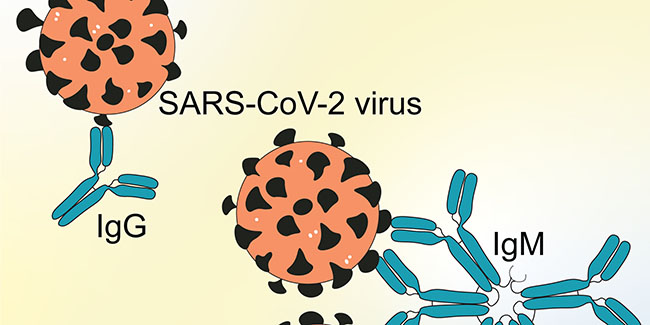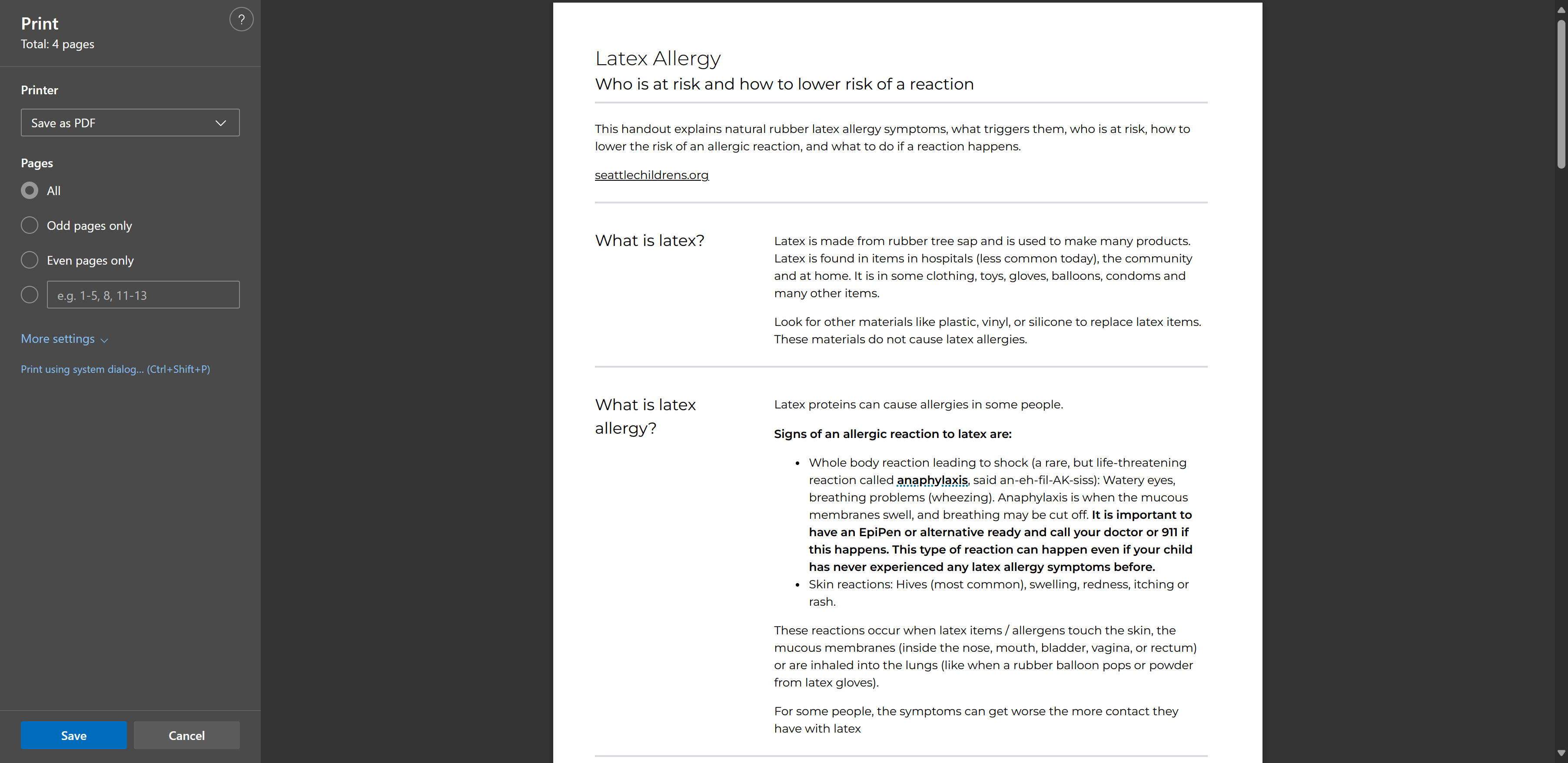Latex Allergy
Who is at risk and how to lower risk of a reaction
This handout explains natural rubber latex allergy symptoms, what triggers them, who is at risk, how to lower the risk of an allergic reaction, and what to do if a reaction happens.
What is latex?
Latex is made from rubber tree sap and is used to make many products. Latex is found in items in hospitals (less common today), the community and at home. It is in some clothing, toys, gloves, balloons, condoms and many other items.
Look for other materials like plastic, vinyl, or silicone to replace latex items. These materials do not cause latex allergies.
seattlechildrens.org/pdfs/latex-allergy
What is latex allergy?
Latex proteins can cause allergies in some people.
Signs of an allergic reaction to latex are:
- Whole body reaction leading to shock (a rare, but life-threatening reaction called anaphylaxis, said an-eh-fil-AK-siss): Watery eyes, breathing problems (wheezing). Anaphylaxis is when the mucous membranes swell, and breathing may be cut off. It is important to have an EpiPen or alternative ready and call your doctor or 911 if this happens. This type of reaction can happen even if your child has never experienced any latex allergy symptoms before.
- Skin reactions: Hives (most common), swelling, redness, itching or rash.
These reactions occur when latex items / allergens touch the skin, the mucous membranes (inside the nose, mouth, bladder, vagina, or rectum) or are inhaled into the lungs (like when a rubber balloon pops or powder from latex gloves).
For some people, the symptoms can get worse the more contact they have with latex.

Who is at risk for developing a latex allergy?
Latex allergy is present in 1 to 6% of the general population. While anyone can develop a latex allergy, certain groups are at greater risk of developing a latex allergy (25 to 50%).
This high-risk group includes children who have:
- Had many exposures to latex products.
- Had 5 or more surgeries.
- Certain congenital anomalies: that affect the genital and urinary tracts (spina bifida, urogenital anomalies, anorectal anomalies, tracheoesophageal fistula). Children with spina bifida appear to be at the greatest risk of developing a latex allergy.
- Severe food allergies to bananas, avocados, chestnuts, kiwi fruits or other food products with similar allergens (latex-fruit syndrome). We do not routinely recommend avoiding these foods, but families should be aware of this risk and educate themselves about next steps should a reaction occur.


